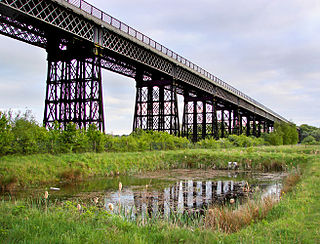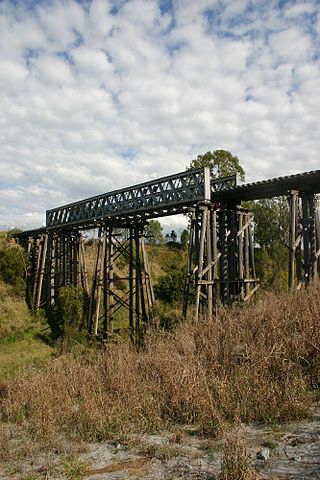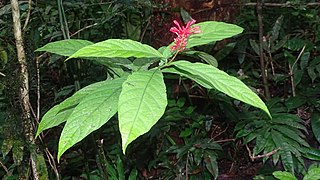A pier is a raised walkway over water, supported by widely spread piles or pillars.
Pier or PIER may also refer to:
Bearing(s) may refer to:
Diversity, diversify, or diverse may refer to:

The Millennium Bridge, officially known as the London Millennium Footbridge, is a steel suspension bridge for pedestrians crossing the River Thames in London, England, linking Bankside with the City of London. It is owned and maintained by Bridge House Estates, a charitable trust overseen by the City of London Corporation. Construction began in 1998, and it initially opened on 10 June 2000.
Nox may refer to:

The Hungerford Bridge crosses the River Thames in London, and lies between Waterloo Bridge and Westminster Bridge. Owned by Network Rail Infrastructure Ltd it is a steel truss railway bridge flanked by two more recent, cable-stayed, pedestrian bridges that share the railway bridge's foundation piers, and which are named the Golden Jubilee Bridges.

London River Services Limited is a division of Transport for London (TfL), which manages passenger transport—leisure-oriented tourist services and commuter services—on the River Thames in London. It does not own or operate any boats itself, except those of the Woolwich Ferry, but licenses the services of operators.

The Tasman Bridge is a prestressed concrete girder bridge connecting the Tasman Highway over the River Derwent in Hobart, Tasmania, Australia. When it opened on 29 March 1965, the Tasman was the longest prestressed concrete bridge in Australia, with a total length measuring 1,396 metres (4,580 ft), including approaches. The bridge provides a vital link between Hobart's city centre on the western shore and the City of Clarence on the eastern shore. Averaging 73,029 vehicle crossings per day, the bridge is the highest volume road section in Tasmania. It features five lanes of traffic including a central lane equipped for tidal flow operations and separated shared-use walkways on both sides, with ramp upgrades for improved access and cyclists completed in 2010.

The Gulf Islands is a group of islands in the Salish Sea between Vancouver Island and the mainland coast of British Columbia.

The Port of Melbourne is the largest port for containerised and general cargo in Australia. It is located in Melbourne, Victoria, and covers an area at the mouth of the Yarra River, downstream of Bolte Bridge, which is at the head of Port Phillip, as well as several piers on the bay itself. Since 1 July 2003, the Port of Melbourne has been managed by the Port of Melbourne Corporation, a statutory corporation created by the State of Victoria.
Pile or Piles may refer to:
Crib may refer to:

A pier, in architecture, is an upright support for a structure or superstructure such as an arch or bridge. Sections of structural walls between openings (bays) can function as piers. External or free-standing walls may have piers at the ends or on corners.

An ecological pyramid is a graphical representation designed to show the biomass or bioproductivity at each trophic level in an ecosystem.

Bennerley Viaduct is a former railway bridge, now a foot and cycle bridge, between Ilkeston, Derbyshire, and Awsworth, Nottinghamshire, in central England. It was completed in 1877 and carried the Great Northern Railway's (GNR) Derbyshire Extension over the River Erewash, which forms the county boundary, and its wide, flat valley. The engineer was Samuel Abbott, who worked under Richard Johnson, the GNR's chief engineer. The site required a bespoke design as the ground would not support a traditional masonry viaduct due to extensive coal mining. The viaduct consists of 16 spans of wrought iron, lattice truss girders, carried on 15 wrought iron piers which are not fixed to the ground but are supported by brick and ashlar bases. The viaduct is 60 feet high, 26 feet wide between the parapets, and over a quarter of a mile long. It was once part of a chain of bridges and embankments carrying the railway for around two miles across the valley but most of its supporting structures were demolished when the line closed in 1968. The only similar surviving bridge in the United Kingdom is Meldon Viaduct in Devon.
The Hawaiian Ecosystems at Risk project (HEAR) was a government-funded project created to provide technology, methods, and information to decision-makers, resource managers, and the general public to help support effective science-based management of harmful non-native species (invasive species) in Hawaii and the Pacific Rim. Created in 1997, funding ended on 31 December 2012, and its website was last updated on 17 May 2013. One of the HEAR sub-websites, Pacific Island Ecosystems at Risk (PIER), was maintained on a strictly volunteer basis for a few years, until a final update on 2 June 2018.

Birnbeck Pier, also known as the 'Old Pier', is a pier situated on the Bristol Channel in Weston-super-Mare, North Somerset, England, approximately 18 miles (29 km) south-west of Bristol. It is the only pier in the country which links the mainland to an island, linking to Birnbeck Island, a 1.2-hectare (3-acre) rocky island just to the west of Worlebury Hill. The grade II* listed pier was designed by Eugenius Birch and opened in 1867. Birnbeck Pier is one of only six Grade II* piers surviving in the country. The refreshment and waiting rooms of 1898 were designed by local architect Hans Price and the clocktower and the piermaster's house have been attributed to him.
Piers may refer to:

Lockyer Creek Railway Bridge is a heritage-listed railway bridge on the Brisbane Valley railway line over Lockyer Creek at Clarendon, Somerset Region, Queensland, Australia. It was designed by Henry Charles Stanley and built from 1885 to 1886 by H A Brigg. It was added to the Queensland Heritage Register on 21 October 1992.

Burdekin River Rail Bridge is a heritage-listed former railway bridge on the Great Northern railway over the Burdekin River at Dotswood, Charters Towers Region, Queensland, Australia. It was designed by Henry Charles Stanley and built from c. 1896 to 1899 by Swanson Brothers. It is also known as Macrossan Bridge. It was added to the Queensland Heritage Register on 21 October 1992.

Odontonema tubaeforme is a plant in the family Acanthaceae native to Central America and naturalised as a garden escape in numerous other countries.